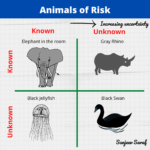On July 27, 2009 OSHA launched its National Emphasis Program (NEP) targeted at chemical facilities. The NEP will operate as a one-year pilot program during which OSHA will conduct planned inspections of chemical facilities.
Which Chemical Facilities Will Be Reviewed?
The Chemical NEP will focus on facilities in the following regions:
- Regions I: Connecticut, Maine, Massachusetts, New Hampshire, Rhode Island, and Vermont
- Region VII: Iowa, Kansas, Missouri, and Nebraska; and
- Region X: Alaska, Washington, Oregon, and Idaho
The facilities selected for planned inspections will be a sub-set of the following:
- OSHA PSM facilities that are covered by EPA’s Risk Management Program (RMP) as Tier 3 sites;
- Explosive manufacturers; and
- Facilities that have been previously cited for PSM violations (IMIS Database or based on area office knowledge )
The master list of facilities created using the above criteria will be sub-divided into three categories:
- Facilities likely to have ammonia used for refrigeration as the only Highly Hazardous Chemical (HHC)
- Facilities likely to have chlorine used for water treatment as the only HHC; and
- Facilities likely to have both ammonia and chlorine, ammonia or chlorine used for other than refrigeration or water treatment, or HHCs other than ammonia or chlorine.
What Does OSHA Chemical NEP Inspection Involve?
OSHA Chemical NEP inspections will be staffed by at least one “Level 1” qualified Compliance and Safety Health Officer (CSHO). Each inspection is expected to have one week of on-site data gathering stage followed by 6-8 weeks of review. Each on-site inspection will begin with a kick-off conference. During the initial meetings, CSHO will ask management representatives to provide an overview of the process, worst case catastrophic scenarios and controls in place to prevent them.
Documents Requested
Following is a list of documents that will be requested at the beginning of the inspection:
- All contract employee injury and illness logs as required by 1910.119(h)(2)(vi)
- List of all PSM-covered process/units in the complex
- A list of all units and the maximum intended inventories of all chemicals (in pounds) in each of the listed units
- A summary description of the facility’s PSM program
- Unit process flow diagrams
- Piping and instrumentation diagrams (P&IDs) including legends
- Unit Plot plans
- Unit Electrical classification diagrams
- Process narrative descriptions
- Descriptions of safety systems (e.g. interlocks, detection or suppression systems)
- Design codes and standards employed for process/equipment in the Selected Unit (s)
- A list of all employees (i.e., hourly and supervisory) presently involved in operating the Selected Units(s) including names, job titles, work shifts, start date in the unit, and the name of the person(s) to whom they report (their supervisor)
- The initial process hazard analysis(PHA) and the most recent “update/”redo” or revalidation for the Selected Unit (s); this includes PHA reports, PHA worksheets, actions to address findings and recommendations promptly, written schedules for actions to be completed, and documentation of findings and recommendations.
Dynamic Questions – Who is the Weakest Link?
To conduct inspection OSHA will create a dynamic list of questions – these questions will not be disclosed publicly and will be changed periodically.The dynamic list of questions will be created in five broad categories:
- PSM General (applicable to all processes)
- Ammonia Refrigeration
- Water and/or wastewater treatment
- Storage
- Chemical processing
During each inspection approximately 15 questions will be drawn from the applicable dynamic list for each evaluation of a selected unit – ten questions from the applicable chemical process dynamic list and five questions from the PSM general dynamic list.
For further details, read the notice from OSHA – PSM Covered Chemical Facilities National Emphasis Program





